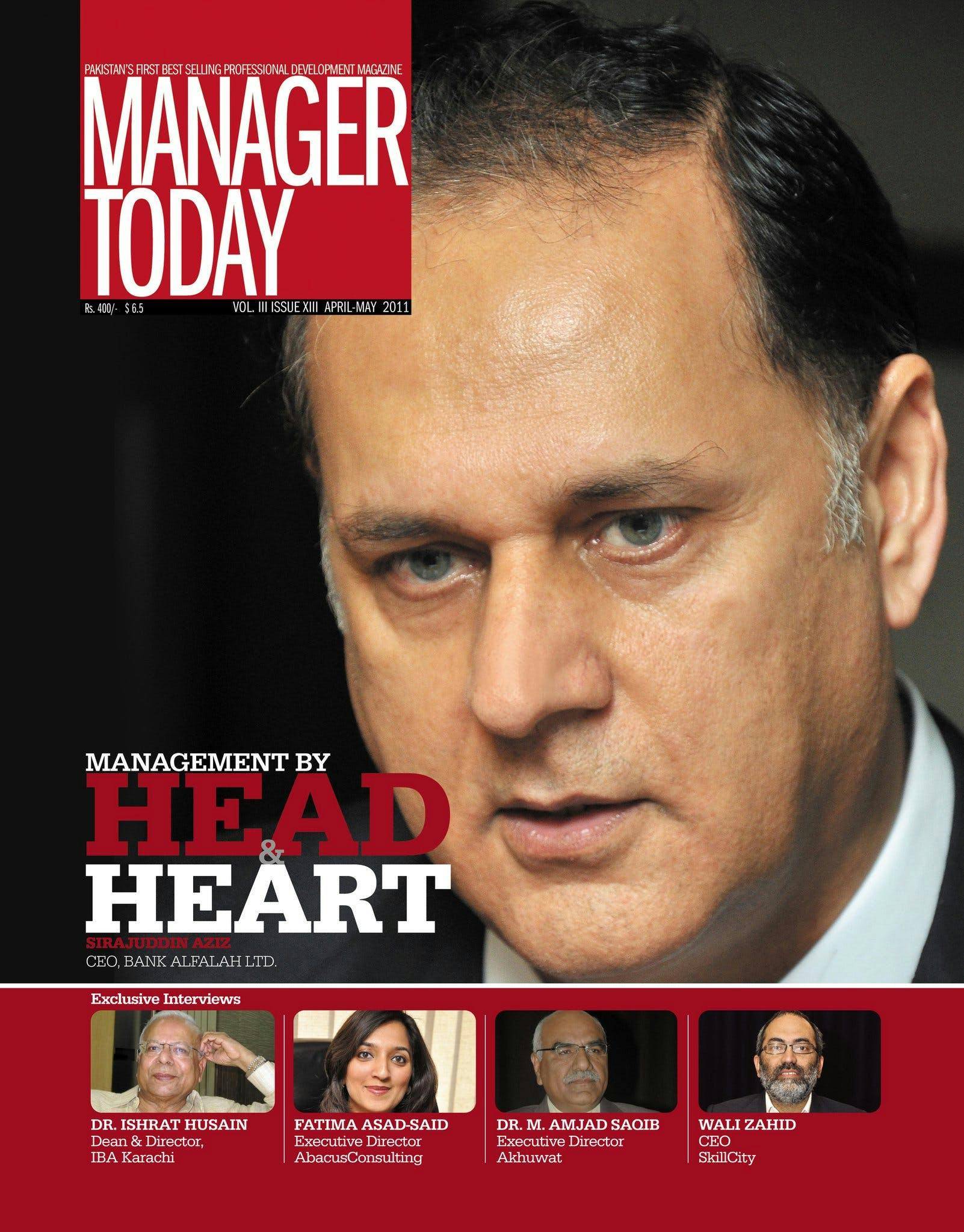Eight pitfalls of corporate training programs in Pakistan

I have been associated with teaching and training for nearly a quarter century. During this time, I have been exposed to some of the finest training programs and trainers in all parts of the world.
And, conversely, I have seen some serious offenders too.
Although an underperforming economy for a myriad of reasons, Pakistan now is a fast-growing economy. Currently the world’s 40th, it is expected to become 18th largest economy by 2050 by GDP and 15th largest by GDP PPP, according to World Bank data.
Coincidentally, Pakistan is the only large country that borders both future world economic powers – China (No 1 in 2050) and India (No 3 in 2050). As our neighbours grow, we are likely to grow too.
This 2050 forecast requires that our workplace training providers also mend their ways and help the executives, businesses and organisations come at par with our fast-track neighbours – both in ambition/scale and skill/execution.
This post is about what we have been missing in corporate training ecosystem in Pakistan and, more importantly, what can be done about that.
NEW: Check out the brand-new PowerPoint presentation prepared by Mehreen Shafique based on these eight pitfalls
Related: Saying-doing gap and the Value-Based Trainer (VBT)
In my view, there are eight pitfalls of corporate training ecosystem that have hurt Pakistani economy so far.
1 Equating trivia with skill
Go to any training by any provider in any city on any topic and you will see the trainers – with some exceptions – doing the same trivial activities in the name of teaching you skills in teamwork, leadership, communication skills. To the extent that these activities became the folk stories of training fraternity.
And if you are a regular at going to training courses, you probably will undergo a similar activity by different trainers on different topics within the same year. The dividing line between trivia and training activity and training and entertaining is blurred.
Skill is a hard-core but mundane thing and requires endless hours of practice. When we make this skill trivial and apparently fun, it loses its core. Hence, our organisations do not produce inspiring people managers or skilled executioners who help ordinary organisations to produce world-class products like an iPhone or a Toyota Corolla.
2 Physical activities vs cognitive learning
This is related to earlier point but needs a separate mention.
Most learning happens at cognitive/conceptual level. We need energy to learn a new skill. When that energy is drained by high-energy physical activities in training courses – which are currently the norm – all you get is blank looks at the end of training day, a hangover and a flurry of photo-sharing and tagging on Facebook. This is more acute when we organize out-bound or resort-based residential training and go to extensive lengths to create that team bonding. Bonding may occur, but not the skill or teamwork that you require every day in mundane workplace conditions.
3 Use of emotive appeal
Another curse that we see is use of overly emotive appeal, particularly during motivational training or speaking sessions. No doubt that we respond to emotive appeal more than we respond to rational appeal. But that doesn’t mean that trainer overly uses emotive content in order to motivate you. Questionable stories, poetic verses, quotations from notable people are used to arouse people.
This is such a waste of time and money. Your employees are aroused by a trainer with a gift of gab and armed with quotes, poetry, one-liners, they come back to work the next day and it’s the same boring routine again.
You can save this money and employee time by asking people to watch 5-minute motivational clips on YouTube (they upload something new every day!) during work hours. Same effect.
4 Lower level vs higher level at Bloom scale
Most of our training programs are lower-level, providing baseline knowledge. Let me explain through Bloom’s Taxonomy of Learning, which I use for module-designing part in my Train-The-Trainer workshops. Bloom has defined six levels of learning: 1 Knowledge, 2 Comprehension, 3 Application, 4 Analysis, 5 Synthesis, 6 Evaluation. (On a side note, I prefer wordings in Revised Bloom Taxonomy (RBT).)
If you analyse 100 training courses from various providers – poor to some great names – 9 out of 10 will be in Levels 1 or 2. The tenth may be Level 3 Application course.
Now, economies don’t produce value-added goods if their trainings are Level 1-3. The training programs and their learning outcomes need to be Level-3-upward. In order to create world-class products or processes you need your employees to use analysis and evaluation competences and create new breakthroughs (synthesis level).
Check out Wali’s LinkedIn author page here.
Subscribe to our YouTube channel: Wali Zahid
Download Wali’s PPTs from SlideShare link here.
5 Obsolete knowledge and old models
Nothing can be worse than this.
Using training models that were made in the 1980’s or 1990’s and may have been useful at that time. But does the Generation Y – 24/7 connected to smartphones and wifi with ADD – bother about those 7 things or 14 points? They won’t even remember that list a minute after they walk out of that venue gate.
Who’s stopping you from using newer effectiveness models? Every year, some bright academic or trainer comes up with a newer model which captures the same essence, more relevant to Gen Y. Why not pick that and replace your old model with a newer one?
Another related negligence is using obsolete data. For example, using stats which may have been valid in 2008 (pre-smartphone era) but may not be valid any more in 2016 (24/7-connectivity).
It’s not just data, even simple tips such as presentation skills. TED changed everything. So, if you are still using a model speaker with jacket and tie who with a straight chest-out posture and using an animated 6×6 PowerPoint dazzles zombie audience, you are living in 1990s.
Similarly, the email of 1990s, 2000s and 2020s are altogether different in their style and tone and wording.
In the Google era, all it needs is a click of a mouse or touch of a button before your next course and you precisely know where data has changed and what needs to be amended.
6 Still, content-based and trainer-led
In spite of fashionable, jazzy trainers all around, training programs are still content-based as opposed to process-based learning experiences. Also, they are trainer-led as opposed to learner-centred.
Acquisition of new knowledge through training programs may have been a worthy, honourable goal in pre-Google era, say until mid-2000s when only trainers had access to the leading edge knowledge and best practice. Not any more.
In the Google era, knowledge is cheap and fast. With a touch of a button, you can get a precise action list or dataset that can help you in your job. Other than employee time, no cost involved.
On the contrary, training is a very expensive activity – trainer fee, venue expenses, meals learner time, learner absence, learner travel & accommodation. So, if you get the same information from a training course, in any cost-benefit analysis training programs won’t stand the ground.
So, what the training programs can do what a Google search can’t? The active learning process. The process of arriving at context-specific solutions by the learners themselves where trainer role is merely of a facilitator, like an engineer on call. If this process is collaborative and facilitated well, peer learning happens and lasting peer relationships are formed.
7 Lack of contextual goals
I have seen very little evidence that trainers either know where Pakistan economy is heading or communicate that to their trainees. Interview any one. I mean any one.
In the absence of contextual landscape, how an employee can be motivated to perform at optimal level. Why would they get a kick? Not just country economy, do you bring industry or market context into your training?
Do you tell them what they are doing in Indonesia (No 4 economy in 2050) or in India in similar geographic and workforce conditions? Or within the country market, why one pharma MNC is having 50% growth while everyone else is just having a single-digit growth?
Context would also filter out some of the often-used models like SMART goal setting method, because that’s for the innocent. Companies in a growing economy like Pakistan might need to follow Jim Collins’ BHAGs method or Nike’s ‘Crush Adidas’ mantra.
8 The uneducated client
Many of the things I said above make trainers or training providers look bad. But the training client is not absolved of their sins in this equation.
The client in Pakistan is simply not an educated consumer or a demanding customer.
Even when they say they are quality-conscious and very demanding, they are not. It’s just a social conversation.
I don’t know what happens at the learning needs analysis (LNA) stage, but when I receive a client call, it’s usually a course title that they want me to deliver.
Which means it’s the same leadership course which I can deliver to a hyper-growth FMCG MNC and a struggling local enterprise or a decayed public-sector organisation.
In order NOT to do that, I need to dig information about their specific leadership challenges. Even when I dig, I do not receive high-value information, it’s usually a yes-no, one-word responses.
Most would make it easy for them saying that I deliver our standard leadership module. Sad.
Another thing that borders criminal negligence is the client’s finding comfort in feel-good positive workshop evaluations over serious learning during training. Both may not the same. In fact, training is an anxiety-inducing activity.
Real learning means people becoming uncomfortable with status quo, with themselves, their current practices. Sometimes that may mean temporary loss of self-confidence.
Much of HR would consider this as a failure of training as opposed to people jumping up and down and calling the training a wow experience.
What to do?
Reverse the eight pitfalls. Easy, isn’t it?
- Develop skill-specific training activities
For example, building teams will have different activities than those for managing teams and different for leading teams. Just because it has team in it, all workshop activities don’t have to be the same. So, every time, people come to your different courses, they see fresh content and a fresh experience. It’s not the usual suspects. And it’s not an activity for the sake of activity.
- Don’t drain their energies that no room left for cognitive learning
If you want to use physical energisers, please do, but in moderation. Tilt the balance to cognitive, rather than physical.
- Use a mix of rational and emotive appeals
More emphasis on rational. Emotive appeal acts fast but may evaporate faster. Rational appeal, particularly in modifying employee behaviours, may have a lasting staying power.
- Ask your training provider to deliver Bloom-Level 3-upwards learning outcomes
Push. Insist. So your employees are not just passive receivers of information or knowledge which they can access without being in classroom, but instead are owners are learning process and use higher-level competences. If they wear those Bloom 4-6 shoes once, they will never be the same people again.
- Update your training models and training content
There’s no excuse in Google-era in not to get real-time updating or revision of your training materials. Scrap your old materials you used 20 years ago, 10 years ago, or even 5 years ago, unless they are still relevant.
On a side note, there’s no point in printing and handing out that bulky ring binder to workshop participants which no one is going to ever look at after that day.
Pakistan is a poor country in terms of foreign reserves. Save paper and save trees and save foreign exchange. Make your training courses paperless. We did that in 2011.
- Make it learner-centred and an active learning process
Rather than telling them, ask them. Ask them in small groups. Let them ask higher-order-thinking (HOT) questions. Lead them without being seen leading.
- Provide contextual landscape
Tell them they are a critical part of a growing, fast-developing Pakistan, which needs to develop and sell its own world-class products like iPhones and Corollas.
What stops us from making those? We are no less brainy than those in Silicon Valley or in Japan. It’s the process in which great products evolve.
Not just country context, use market, industry, competition intelligence. Make them competitive so they embrace stretch goals.
- Become an educated and demanding training consumer
Finally, the training consumer – the client – needs to ensure that they get value for money. By value, I don’t mean ROI of training (ROTI). Which is another crap and time-waster.
By value, I mean are you hiring a trainer to cover for your failing: engaging/motivating your employees? Engagement is a culture issue and not a training issue.
Or, are you inviting a trainer to do your away-day/ staff picnic? You are better-off with any staff member with crowd-management skill. Or, are you inviting a trainer in place of a standup comedian?
Or, are you inviting a trainer because there’s a budget underspend or you haven’t had a training program for some time?
I am sure none of the above four scenarios apply to you, my dear client.
Be as specific and demanding as you can be. Precisely know if you want team building, team managing, team leading, teamwork, or leadership. Because these are not synonym.
These are five different courses with different learning outcomes. And each of these five courses could have 10 different dimensions each specific to a client at a particular time.
This requires building capacity of your L&D managers, ensuring that they are accessing high-quality updated content related to learning and talent development strategy and learner-centred courses and what is changing over the years. Or, perhaps getting them outside mentors or coaches and paying for them.
Once you are able to articulate your learning needs to this level of depth, then do the due diligence and look for a training provider that can meet your needs and demands. You can pay them well.
After all, saving a trainer fee is no fun when your 20 mangers are off from work and go back to workplace the next day without learning anything and only a Facebook memory.
Wali is author of iBook, Great Training in 10 Steps. Free to download. You will need a US/UK App Store account.
Wali runs the world’s first paperless Train the Trainer workshop, now in 20th year, at 16+ Asian locations, with over 1,500 trainers trained so far.
He’s CEO of Skill City. You can follow him on Facebook, Twitter and LinkedIn.

Wali Zahid
Wali Zahid is a longtime China watcher and a Pakistan futurist. An award-winning journalist, he writes on issues of significance to Pakistan and CPEC & BRI.
Related posts


